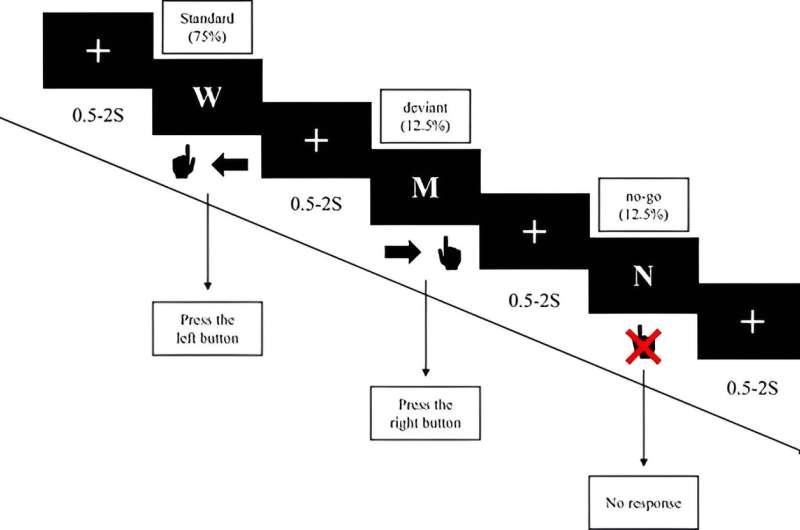This article has been reviewed according to Science X's editorial process and policies. Editors have highlighted the following attributes while ensuring the content's credibility:
fact-checked
proofread
Study reveals new insights into behavioral inhibitory control through functional neuroimaging

In a recent article published in the journal Psychoradiology, researchers from Sichuan Normal University introduced an innovative Three-Choice BIC paradigm that merges the GNG and two-choice oddball (TCO) tasks.
This study engaged 48 college students who responded to varied stimuli using designated keys and restrained responses to no-go stimuli. Employing functional neuroimaging coupled with conjunction and ROI analyses, the researchers sought to unveil unique neural pathways linked to BIC processes.
Specifically, the study focused on the neural underpinnings of BIC within the TCO task, which was crafted to navigate around challenges tied to GNG. Offering dual response choices, the TCO task is posited to provide a more transparent lens into the inhibitory effect. The findings affirmed the efficacy of both GNG and TCO tasks in gauging BIC function.
Notably, while the GNG task activated the anterior cingulate cortex (ACC), the TCO task did not, implying that ACC activation isn't fundamental to BIC. Furthermore, the TCO task prompted more pronounced activations in the right inferior frontal cortex compared to GNG, underscoring heightened prefrontal inhibitory processing. In essence, the study highlighted the pivotal role of the prefrontal cortex in inhibitory control, suggesting that ACC's involvement may be supplementary rather than essential.
These findings can revolutionize the understanding and diagnosis of conditions associated with BIC dysfunctions. By using the TCO task, researchers and clinicians can gain a clearer understanding of the neural processes of BIC, along with a new behavioral index of RT delay in addition to the traditional accuracy data, potentially leading to improved diagnostic tools and therapeutic interventions for conditions like ADHD and substance abuse.
The study also sets the stage for further research into the intricacies of the neural substrates associated with inhibitory control, pushing the boundaries of cognitive neuroscience.
More information: Shirui Zhao et al, Neural substrates of behavioral inhibitory control during the two-choice oddball task: functional neuroimaging evidence, Psychoradiology (2023). DOI: 10.1093/psyrad/kkad012




















